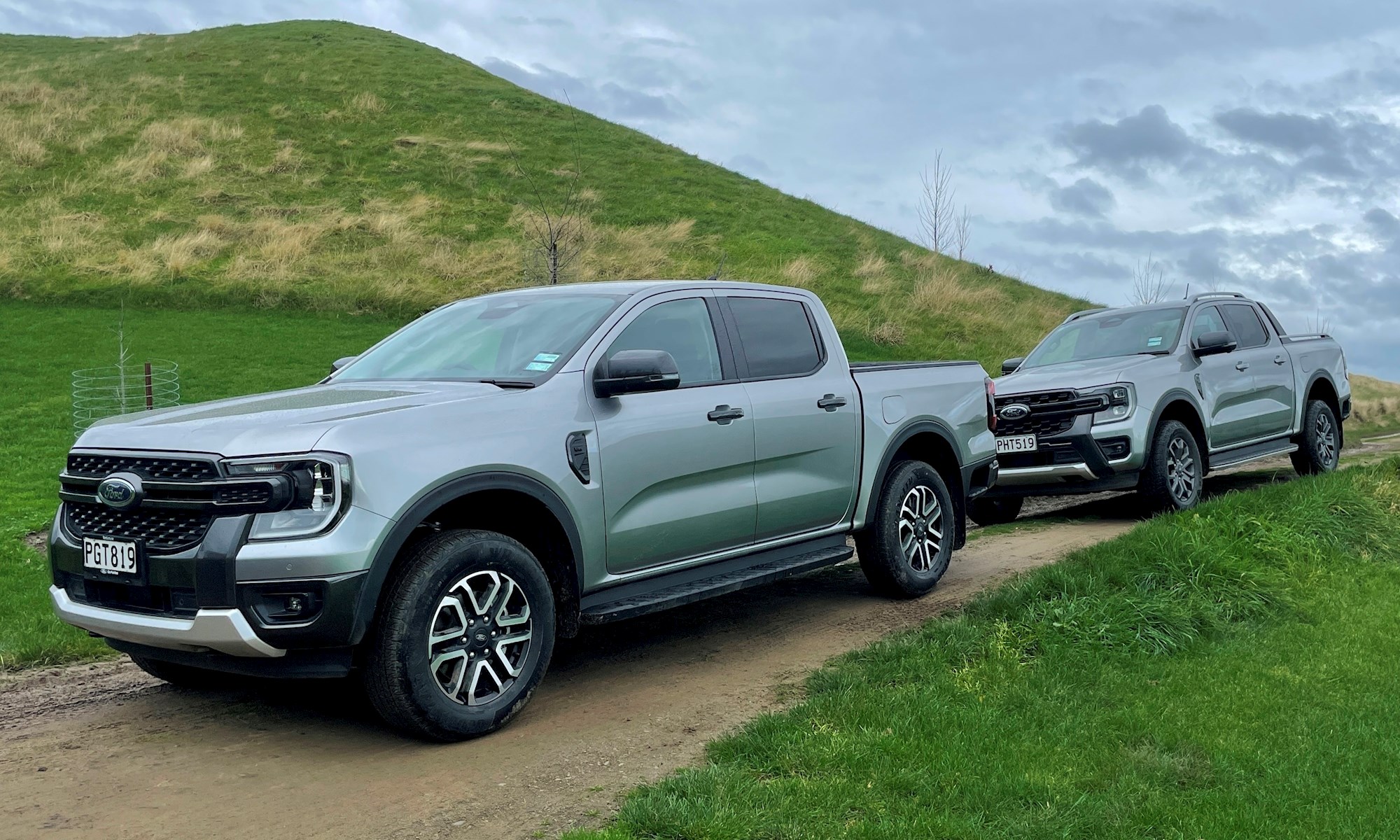With new V6 engine options that are gruntier than the powertrains they replace, it’s easy to think of the new Ford Ranger as a firm two fingers to the New Zealand Government’s new Clean Car Discount regime. Every “next-generation” Ranger variant attracts a fine, from $1840 right up to the maximum $5175.
That’s not the reality, of course. New-vehicle development programmes start years, not months, ahead of market launch. The decision to offer bigger-capacity, more powerful engines was made a long time ago, based on customer feedback.

Ranger customers haven’t changed their minds in the interim, by the way. As previously reported by DRIVEN, Ford NZ holds over 5000 orders for the new model at launch, half of those for V6 models. But we’ve covered that ground already, so let’s not get bogged down in those emissions issues.
Now we’ve had the chance to drive the new Ranger on and off Kiwi roads, the big question is whether that V6 power is worth the price premium. To save you scrolling to the end… it really is. The new 3.0-litre V6 (derived from a unit used in the US-market F-150) is a superb all-rounder that plays a big part in Ranger lifting the bar for one-tonne utes yet again.
The premium over the 2.0-litre biturbo (BiT in Ford-speak) is justified, and that’s saying something because previously the BiT was a benchmark in ute powertrains. It’s not just down to the extra 30kW/100Nm on tap: the V6 serves up effortless performance at any speed, linear power delivery and an appealing (yet still seldom intrusive) soundtrack.
View all Ford Rangers on DRIVEN
Like the BiT, the V6 comes with a very slick 10-speed automatic transmission.

The addition of a new full-time AWD system to the V6 variants further strengthens the argument. V6 Rangers now have a “4 Auto” setting that offers adaptive AWD also suitable for tarmac driving (still a rarity among one-tonne utes) and can automatically compensate for more demanding off-road driving conditions. Not dissimilar to what you get in a Land Rover.
The only other utes that offer on-road AWD are the top-spec Mitsubishi Triton Super Select models and the Volkswagen Amarok. The next-generation Amarok is moving to Ford’s Ranger platform, so the Blue Oval’s technology will soon be shared with the VW.
For the record, a single-turbo 2.0-litre (125kW /405Nm) is retained for some workhorse 4x2 Ranger models, but the BiT is now the core engine now across the XL and XLT 4x4 models; the previous 3.2-litre five-cylinder has been dropped (and yes, it was thirstier than the new V6).
The only model to offer both BiT and V6 is the Wildtrak. Which also means we can see the true premium for the V6 is $5k, which is the difference between the $75,490 Wildtrak BiT and the $80,490 Wildtrak V6. But the Clean Car fine is double: the BiT is the least dirty Ranger, attracting a fine of $1840; but the V6 carries a penalty of $3910.

The new Sport grade (pictured above, in front of the Wildtrack) is potentially a key variant for Ranger V6. It’s the entry point to the six-pot, so not as dressed-up as the Wildtrak. But significantly, you can buy the Sport V6 for exactly the same price as the Wildtrak BiT, if you’re prepared to forgo the Wildtrak’s exterior dressing and some equipment/technology such as automatic parking, 360-degree “zone lighting” that you can control from your mobile, alarm system, trick pull-out cup holders, ambient lighting and extra cabin storage/USB ports.
The Wildtrack still has the edge on-road, thanks in part to an upgraded version of Goodyear’s Wrangler tyre, but there’s not a lot in it. And every Ranger has made a generational leap in steering, ride and handling.
Whichever variant you choose, you’re getting a Ranger that combines chunky design detail with what the company calls “futuring”: features that place this outwardly traditional one-tonne ute at the pointy end of technology for the segment.

Some of the safety kit would be the envy of a family SUV. All Rangers feature adaptive cruise and land-keeping technology, including Evasive Steer Assist that uses the electronic power steering to assist the driver in emergency manoeuvres.
The blind-spot alert system can be configured to take account of a trailer and there’s even a “far side” airbag in between the driver and front passenger.
The cabin is dominated by digital instrumentation and a large portrait touch screen in the centre console: 10in for most of the range, with a slightly larger 12in unit for the Wildtrack.

It’s the conduit for most vehicle functions, as is the fashion in 2022, but Ford has retained a permanent menu at the bottom for climate functions and physical controls underneath for air-con temperature, fan speed and audio volume.
The provision of a traditional lever for the “e-shifter” (as opposed to the rotary gearlever favoured for many Ford passenger cars) was a direct response to customer feedback.
More futuring here: it looks old-school but is motorised and can be operated by simply resting a hand on top and gently rocking.
The reason it’s taken us so long to get to the hero Ranger Raptor is that we haven’t driven it yet. The launch for this $89,990 Ford Performance model, with a new 3.0-litre V6 twin-turbo petrol engine, comes later in the year. Hoops and hollers to follow, no doubt.
Some separation is appropriate according to Ford, which says the dune-hopping 292kW/593Nm Raptor is now a completely different model line to the mainstream Ranger. Can't wait.
FORD RANGER
ENGINES: 2.0-litre single-turbo (SiT) and bi-turbo (BiT) diesel fours, 3.0-litre V6 turbo-diesel
POWER: 125kW/405Nm (SiT), 154kW/500Nm (BiT), 184kW/600Nm (V6)
GEARBOX: 6-speed (SiT only) or 10-speed automatics, 2WD, part-time 4WD or full-time AWD
CONSUMPTION: 7.6l/100km (XL 2WD) to 8.4l/100km (V6)
PRICE RANGE: $46,990 (XL single cab) to $80,490 (Wildtrak V6)














